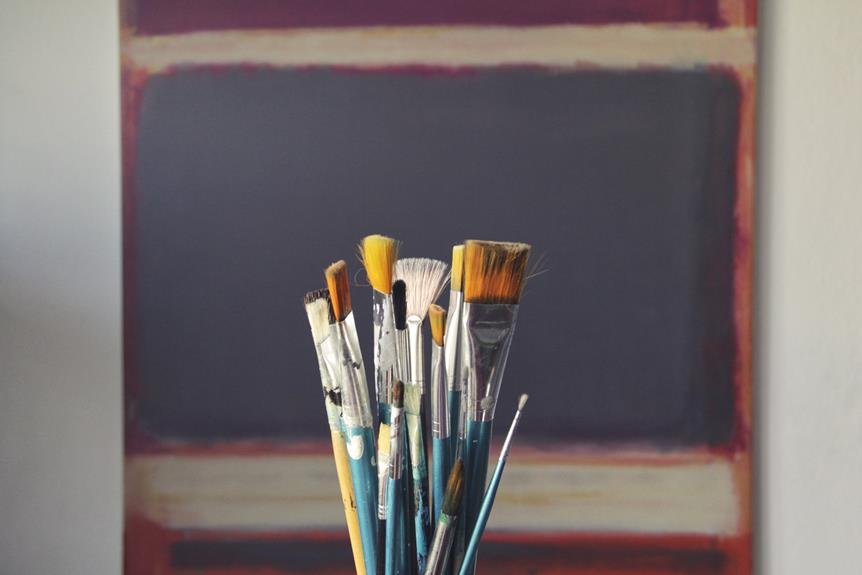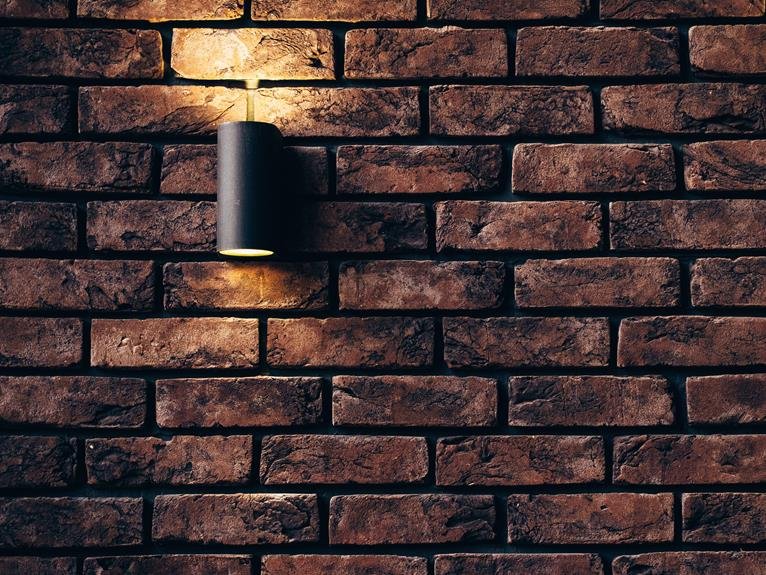Ready to spruce up your home? Keeping tabs on the newest interior paint color trends is key. The trends are always evolving, so it’s vital to know what’s in style.
Want a modern and fresh look? You might lean towards bold and vibrant colors. On the other hand, softer shades can also offer a contemporary feel.
Let’s have a friendly chat about the paint color trends to watch. Adding these to your home can certainly give it that extra pop.
Remember, our aim is to make this as clear and understandable as possible. Let’s keep it simple, straightforward, and avoid any jargon.
So, shall we start?
Soft and Muted Colors
Soft and muted colors are the new in-thing in interior design. These include pastel pinks, baby blues, earthy beiges, and creams. They not only add a touch of style but also create a calming atmosphere.
The best part is, these colors are versatile. You can mix and match them to create a unique look. For a touch of modernity, you could try pairing them with light green or pale yellow. It’s a great way to make your space stand out.
The power of soft and muted colors is that they enhance other design elements in your space. They make everything else pop without being too overpowering. The result is a stylish and modern look that’s timeless.
Now, if you’re looking to take things up a notch, consider transitioning into bold and vibrant colors. It could be just what you need to elevate your design. But remember, the key is to make it easy on the eyes and inviting.
Bold and Vibrant Colors
If you’re a fan of bold and vibrant colors, your space is in for a treat. These colors can infuse life into any room, making it more exciting and inviting. Let’s discuss the variety of options available.
Starting with deep tones like emerald and navy, they’re excellent choices for an accent wall. Their rich hues can create a depth of character in your space. Imagine a navy blue wall in your living room; it’s a game-changer, right?
Moving on to mid-range tones, think mustard and sage. These colors are quite adaptable and can fit into any room’s decor. Picture your kitchen cabinets in a beautiful sage color. It’s a subtle yet impactful way to incorporate color.
Next, we’ve bright colors like coral and turquoise. These are your go-to options when you want to add a spark of color to your room. A turquoise throw pillow or a coral lamp shade can make all the difference.
Lastly, colors like burgundy, rust, and magenta can help create a cohesive color palette. They tie everything together, giving your space a well-rounded and balanced look.
Creating a bold and vibrant color palette is a fantastic way to express yourself in your home decor. With the vast array of options, you can craft a unique and modern look that speaks to your style. So, why not give it a try?
Monochromatic Color Schemes
Have you ever thought about using a monochromatic color scheme for your interior painting project? This trend involves using various shades of a single color. The result? A harmonious and unified look that gives your room a hint of modern sophistication.
But it’s not just about aesthetics. A monochromatic color scheme can also create a calming and relaxing atmosphere. Imagine coming home after a hectic day to a space that helps you relax and unwind.
So, how do you achieve this look? Start by picking one color that you love. Then, use different variations of this color throughout the room. Sounds simple, right?
Well, there’s a bit more to it than that. To create depth and dimension in the room, consider mixing in different textures. Experiment with matte, glossy, and metallic finishes. This can add an interesting visual element to your space.
And don’t forget about accent walls! They’re a fantastic way to add a dash of drama to the room, and create a focal point. Just remember, the whole idea is to keep it harmonious and unified. So, keep it within the same color family.
Accent Walls
Accent walls are a fantastic way to add some excitement to your living space. Ever wondered how just one wall painted in a different color can completely transform a room? Let’s dive into it.
Accent walls are all about choosing one wall within a room and painting it with a bright color. You might want to pick the longest wall or the one with the most distinct feature. But why do this? It’s simple. That bright hue becomes a focal point, tying together the entire room into one cohesive look.
Now, you might think this is a bold choice. And you’re right! It’s a move that creates a dramatic and inventive appearance. It’s like giving your room a mini-makeover, refreshing its look without having to change everything in it.
Choosing the right color for your accent wall is crucial. You should consider the other colors in the room. Look for a shade that won’t just stand out, but also complement the rest of your decor.
With the right color, you can create contrast. It gives the room a unique look, adding elements that can spark conversations.
Color Blocking
Have you ever experimented with color blocking for your home décor? It’s a trend that’s catching on fast in the world of interior design. It’s all about picking two or more vibrant colors and using them in separate areas of a room. You can achieve this look with paint, wallpaper, and other materials.
Let’s take a look at an example. Imagine choosing red paint for one wall, blue wallpaper for another, green fabrics for your upholstery, and yellow rugs. Each color independently stands out, yet collectively, they create a visually appealing ensemble.
Color blocking has this unique ability to instantly jazz up any space. It brings in a dramatic flair that can really shake things up. And the best part? You don’t have to be a professional to try it. With a little imagination, you can mix and match different colors and materials to make a statement.
The beauty of color blocking is its versatility. You can go loud with bright shades or keep it low-key with neutral tones. Either way, it’s a fantastic method to introduce a contemporary touch to your home. So why not give it a whirl? You might just surprise yourself with the results.
Frequently Asked Questions
What Kind of Paint Should I Use to Achieve the Best Results?
Choosing the right paint is crucial for achieving the best results. The key is to opt for a high-quality paint. Higher quality paints are usually more durable and provide a smoother finish.
You also need to consider the finish of the paint. The finish can greatly affect the overall look of your space. You have options like matte, semi-gloss, or high-gloss finishes, so choose one that suits your style.
Don’t be afraid to play around with colors and textures. Experimentation can lead to unique and modern results. You can go for bold hues if you want a striking effect. Alternatively, you can choose more subtle shades for a calming atmosphere.
Remember, your space should reflect your personality. So pick a paint that makes you happy. Whether it’s a warm red or a cool blue, the important thing is that it brings joy to you.
In all, choosing the right paint involves considering the quality, finish, color, and texture. It’s a fun process that can transform your space into a place you love.
How Do I Know Which Colors Will Work Well Together?
Figuring out which colors pair well together doesn’t have to be a guessing game. The color wheel theory is a handy tool that can guide you in this endeavor. It’s all about understanding the relationships between different hues and how they can complement each other.
To start with, you can try using complementary color schemes. This involves picking two colors that are directly opposite each other on the color wheel. They create a vibrant contrast, making each color stand out.
Another approach is to use analogous color schemes. These are colors that are next to each other on the wheel. They provide a serene and comfortable design, given their similarity in hue.
Lastly, there’s the triadic color scheme. This is where you choose three colors that are evenly spaced around the color wheel. It’s a balanced and harmonious combination that can add a dynamic touch to your space.
Are There Any Tips for Choosing the Right Colors for My Space?
Choosing the right colors for your space involves several factors. One of the key aspects is lighting. The way your space is lit can greatly affect how colors appear. A shade that looks great in natural daylight might not look the same under artificial light.
Furniture plays a big role as well. The colors you choose should complement your furniture, not clash with it. If your furniture is a neutral color, you have more leeway with your color choices. If your furniture has bold colors, though, you’ll want to choose colors that go well with those.
Then there are the other accents in your space, like rugs, curtains, and artwork. These should be taken into account when choosing your colors. You want a look that’s harmonious, not disjointed.
Feel free to experiment. Play around with contrasting hues and textures. This can add depth and interest to your space. And don’t forget to inject your personal style into your choices. After all, it’s your space and it should reflect you.
How Do I Determine the Right Amount of Paint to Purchase?
Knowing how much paint to buy can seem like a tricky task, but don’t worry, it’s simpler than you might think.
First, you’ll want to figure out the size of the area you’re planning to paint. This is done by measuring the walls and ceilings of the space. If you’re not sure how to do this, there are plenty of online guides that can help.
Once you have the measurements, you can calculate the total square footage. You don’t need to be a math whiz for this, just multiply the length by the width of each wall or ceiling. Add up all these numbers, and you’ve got your total square footage.
With this information in hand, your next stop is the paint supplier. They’re the experts who can guide you on the amount of paint you’ll need. Remember, every project is unique. Factors like the type of paint and the color can affect coverage, so it’s always best to consult with them.
And that’s it! By following these steps, you can ensure you buy just the right amount of paint for your project. Happy painting!
How Do I Properly Clean My Walls Before Painting?
Preparing your walls for a fresh coat of paint involves a crucial first step – cleaning them. A clean wall will ensure that your paint goes on smoothly and lasts longer. So, how exactly do you go about it?
Start by mixing a mild detergent with warm water. This doesn’t need to be anything fancy, just a simple dish soap will do. The warm water helps to break down any stubborn stains or dirt.
Grab a sponge or cloth, and get scrubbing! Make sure you cover every inch of the wall, giving extra attention to any areas with visible stains. Don’t be afraid to apply a bit of elbow grease, it will make the painting step a lot easier.
Once you’ve scrubbed every nook and cranny, it’s time to rinse. Using clean water, wash off the detergent. This is a step you don’t want to miss because any leftover soap could affect the quality of your paint job.
Finally, dry the walls using a clean, dry cloth. It’s important to ensure the walls are completely dry before painting. This process might take a bit of time, but it’s worth it. After all, a well-prepared wall is key to a pristine paint job.
In a nutshell, cleaning your walls before painting is pretty straightforward. Just remember these steps: mix, scrub, rinse, and dry. Stick to this and you’ll be looking at a beautifully painted wall in no time!
Conclusion
Choosing the perfect color for your interior walls can be exciting. There’s a whole spectrum of shades and hues to consider. Are you a fan of subtle, muted tones? Or do you gravitate towards bold, vibrant colors?
There’s a trend for every preference. For instance, you might like the simplicity of a monochromatic scheme. Or, you might find an accent wall appealing. Color blocking is another option that’s gained popularity.
Remember, the aim is to give your home a touch of modern style. With the wide range of choices, it’s easy to find a color palette that suits your taste. It’s all about exploring your options and selecting what works best for your space.
So, let’s get started, shall we? Let’s discuss and find the best color trend that suits your style and space. No need to worry about jargon or complex terms, we’ll keep things simple and easy to understand. After all, this is your space we’re talking about.









